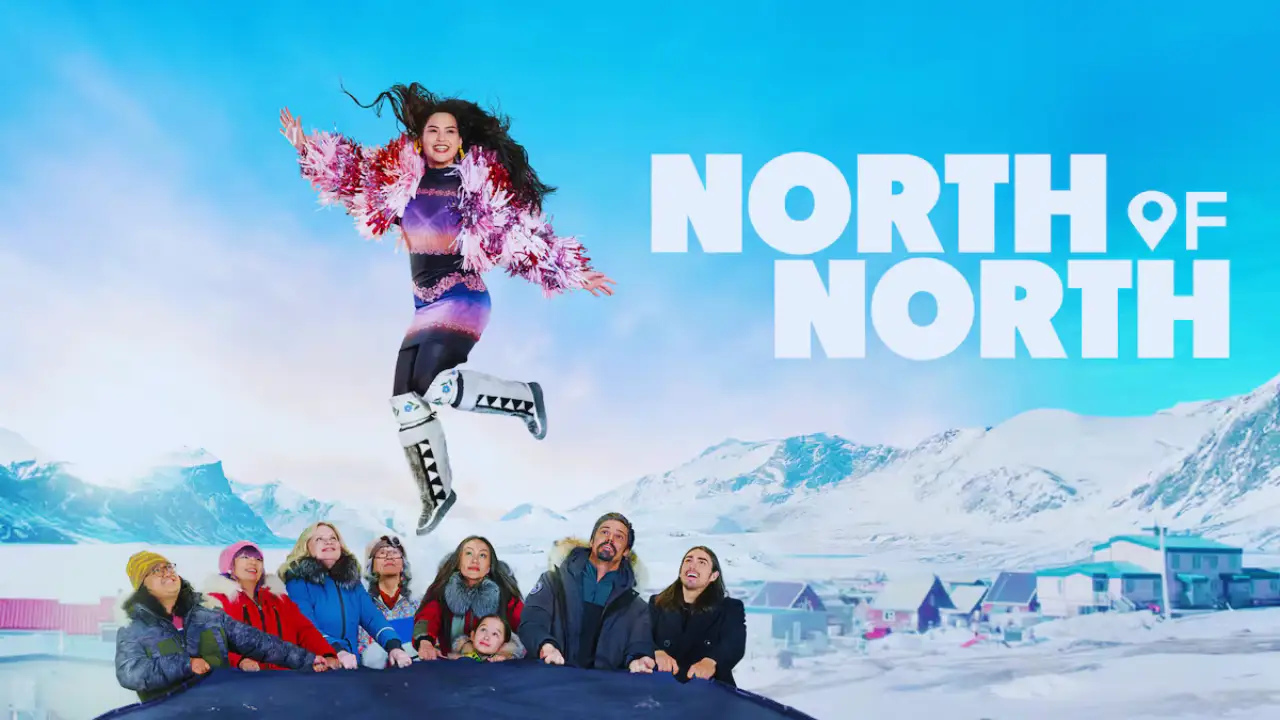Netflix’s ‘North of North’: Fiction Inspired by True Inuit Experiences
The Netflix hit ‘North of North’ is a comedic series about Siaja, an Inuit woman seeking life beyond traditional roles in the fictional town of Ice Cove. While not strictly based on actual events, the show is inspired by real Inuit experiences and was created by two Inuit women from Nunavut, Stacey Aglok MacDonald and Alethea Arnaquq-Baril.
This tweet discusses how the show connects to real Inuit communities and the importance of representation in media. It delves into how the series blends humor with serious themes like generational trauma and cultural identity, providing insight into the reality behind Ice Cove and its characters.
Creators Infuse Their Lived Experiences On The Screen
The pulse of “North of North” springs from the real lives of its creators. Stacey Aglok MacDonald lives in Iqaluit, the capital of Nunavut, but grew up in Kuglutuk, Nunavut. Her co-creator, Alethea Arnaquq-Baril, was raised in Iqaluit. This show draws on the firsthand experience of these women to inform us about the lives of Arctic Inuit.
“We wanted to tell something joyful, fun, beautiful, and heartfelt,” MacDonald told Broadview. This vision was born from their lives as modern Inuit women coping with family, community, and personal development.
The duo first collaborated on 2019’s ‘The Grizzlies.’ From this earlier collaboration, they found themselves in constant brainstorming mode surrounding creative projects, and ‘North of North’ became a touchstone passion project derived from their common lineage.
The character Siaja isn’t inspired by one specific real-life person. Instead, she shows the struggles that many Inuit women face. Her story—sleeping on her mother’s couch, searching for new job opportunities, trying to find her purpose—draws from real-life scenarios that the creators and their writing staff have experienced.
Other Inuit women were in the writers’ room, each contributing their own experiences. This collaborative approach ensured the show represented multiple voices within Inuit culture rather than one perspective.
Ice Cove: A Fictional Town With Real-World Roots
Ice Cove is not real, but its spirit lives in actual Inuit communities throughout Nunavut. The creators consciously chose to create a fictional place rather than set the show in a real town. “We wanted a show that felt real, for us — and Inuit (community) — everywhere,” Arnaquq-Baril said via email to Netflix.
Making Ice Cove allowed the team to show there is more to Inuit culture than the clumping of igloos. “We wanted to be able to play with regional differences in clothing and fashion, slang, and senses of humor while not being beholden to one specific community,” Aglok MacDonald added. Nunavut is diverse, and Inuit communities vary widely.”
This creative choice helps audiences understand how Inuit life varies across the region. One episode might feature traditions from Iqaluit and another, customs for smaller communities like Kuglutuk.
The town’s layouts—with community centers, family homes, and gathering spots—reflect real Arctic communities. The weather challenges, seasonal transitions, and daily routines depicted on screen reflect what residents in Nunavut face in real life, year-round.
Even though the town is fictional, viewers who know Canada’s Arctic region sometimes recognize familiar locations and situations. That mix of fiction and reality helps make the show feel both new and authentic.
The Use of Cultural Authenticity in Storytelling
‘North of North’ is likely one of the first mainstream TV shows focused entirely on an Inuit community. The representation, of course, is a responsibility that the creators take seriously. The show uses a natural mix of Inuktitut and English, mirroring how many real Inuit communities speak today.
Props, clothing, and on-screen food are based on research on authentic cultural practices. Some family dynamics depicted on the show — such as Siaja’s interactions with her mother Neevee and daughter Bun — mirror intergenerational relationships in Inuit families.
The show does not hold back regarding how these relationships experience peculiar challenges in modern times. The creators collaborated with cultural consultants to accurately depict traditions, values, and community practices. When the show approaches traditional skills or ceremonies, it does so respectfully and accurately.
Even small details are important—from how characters make traditional foods to the art that adorns home walls. These things may seem insignificant but lend layers of authenticity that viewers who are Inuit recognize and appreciate.
Instead of presenting stereotypes, they focus on everyday life, what Inuit eat on a Tuesday, and its name indicates the ‘I’ in ‘We’ in the film title ‘North of North’ – a portrayal that balances the traditional with modern realities.
No, Myung-Jin Was Dealing With Real Issues Through Humour
Although ‘North of North’ offers plenty of laughs, the show doesn’t shy away from weighty issues impacting Inuit communities. The show introduces vital themes into its plot lines with careful attention.
White saviorism gets scrutinized by Helen, the well-intentioned but often oblivious Southerner running the community center. The show employs her character to point out how divorced good intentions are from cultural understanding and does so without making her a villain.
“By her very character, Helen shows you what happens when people love culture but don’t quite understand the lived experience,” Aglok MacDonald explains. These moments provide teaching opportunities without didactic messaging.
Generational trauma — a reality experienced by many Indigenous communities in the wake of colonization — shows up in the family storylines. The multi-generational trauma Siaja, her mother, and her daughter grapple with shows how historical wounds are passed down.
In the show, contemporary challenges like housing shortages and employment problems intersect with a tension between traditional practices and modernity. These storylines mirror real-life issues in contemporary Inuit communities.
Through humor, ‘orth of North is making tough conversations easier tIt’s hilarious, but the viewers are also getting a glimpse into social issues that they would never know about otherwise.
FAQ
Is Siaja a real person?
No, Siaja is not a real person. But her experiences are inspired by the real lives of the show’s creators and writing team, all Inuit women from Nunavut.
Is Ice Cove Real?
Ice Cove is a fictional town created for the show. The flag reflects many different Inuit communities throughout Nunavut rather than a single real place.
Are the cultural practices depicted in the series realistic?
Remember that the series creators worked with cultural consultants to portray Inuit traditions, language, and everyday life accurately. The storylines are fictional, but the artistic components are based on actual practices.
What led the creators to make a comedy series?
They “wanted to tell something joyful, fun, beautiful, and heartfelt,” Stacey Aglok MacDonald said. Comedy provided an opportunity to share Inuit experiences through an entertaining, palatable medium while still engaging with weighty subject matter.
Is the show filmed in Nunavut?
Some of the show is filmed on location in Nunavut, but other scenes feature sets constructed to replicate Arctic surroundings. The production has many Inuit crew members and actors.
Final Words
North of North: Journeying Toward the Heart of the Arctic premieres Thursday, breaking new ground by showcasing Inuit life on mainstream television. While not based on actual events, the show draws from real people, places, and cultural practices, created by Stacey Aglok MacDonald and Alethea Arnaquq-Baril.
The series resonates with viewers through honest storytelling and humor, offering Inuit audiences rare representation while informing others without lecturing. This balance elevates “North of North” beyond a typical sitcom, serving as a cultural bridge. As streaming platforms seek diverse narratives, the show sets a new standard for portraying underrepresented communities with respect and authenticity.
Table of Contents



